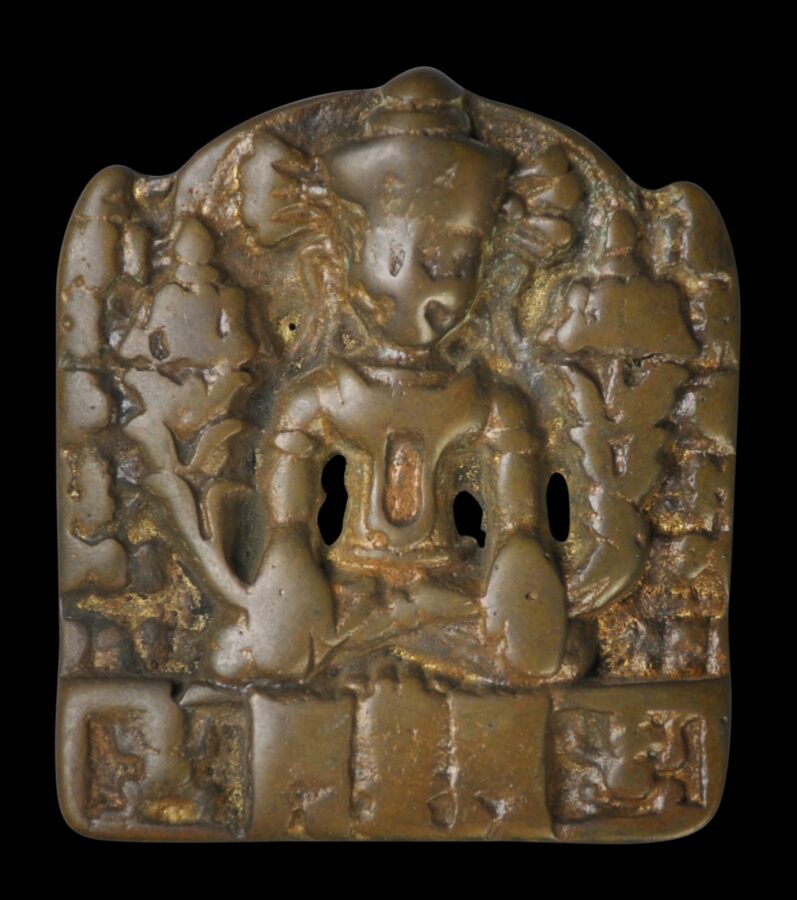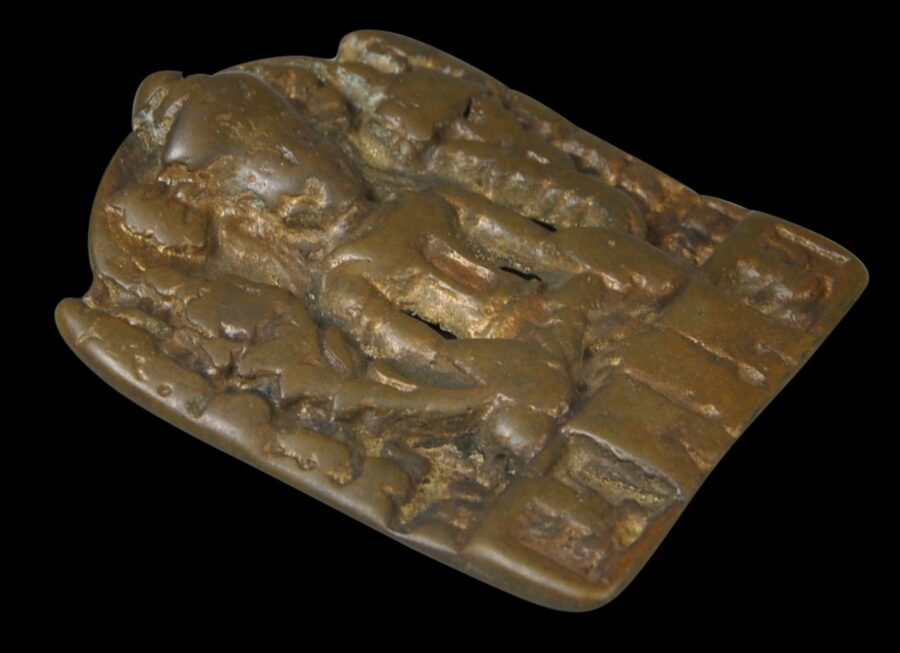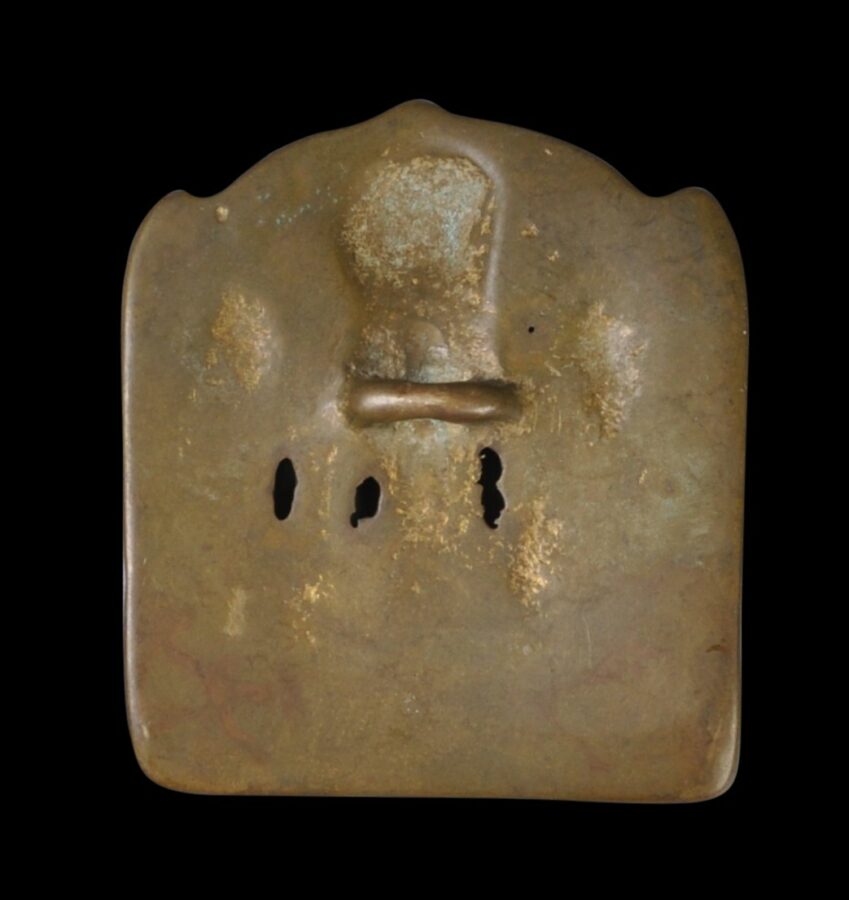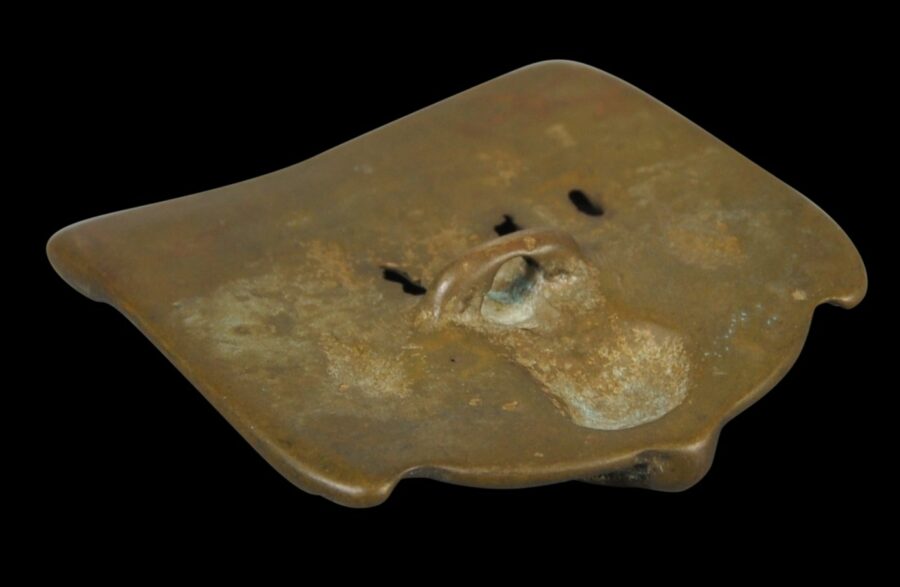Enquiry about object: 9151
Tibetan Deity Tokcha, probably Padmapani
Tibet circa 12th-13th century
height: 6cm, width: 5.3cm, weight: 65g
Provenance
UK art market
This cast bronze deity plaque would have served as a tokcha. The deity – probably Padmapani – seated, cross-legged, and with lotus stems rising on each side. The headdress is winged in keeping with Pala-style depictions of Padmapani which were traded into and then copied in Tibet around the 12th century.
The lower register has small devotee deity images on either side and possibly a section of Tibetan syllables between them.
The reverse has a loop to allow the plaque to be attached to clothing or to be suspended and worn as a pendant.
Tokchas (also spelt as thokcha, tokche, thogchak, thog-lcag, or thogchag) are small ‘found’ ancient, sacred objects that went on to serve as votive talismans, and which were valued for their magical properties. Usually they are of bronze or copper alloy. Many are believed to also contain some meteoric metal. Tibetans highly prized them and would wear them to protect them and to absorb evil. Usually they were hung from the neck or attached to clothing, but also were sewn onto amulet pouches or attached to religious articles. They were also used by Tibetan shamans – healers, spirit-mediums and magicians – as part of their ‘tools’ of trade.
Particularly effective or powerful tokchas would be sold on or passed down through the generations. Accordingly, genuine and powerful tokchas should show a great deal of wear, as in the case of the example here.
It is likely that many tokchas originally were belt fittings or ornaments either from Tibet or from the Eurasian Steppes and Central Asia or Persia, and were traded into Tibet along Silk Road trading routes. Others were purpose-made as talismans, which explains why some genuine tokchas can be very similar. The traditional belief however, was that tokchas were not made by humans and even that they had simply fallen from the sky. The animal motifs employed in many tokchas suggest a linkage to Tibet’s pre-Buddhist Bon past. (Buddhism was introduced to Tibet in the early 7th century.)
The example here has the great wear and visible age. Overall, this is a very fine, early item.
References
Bashkanov, M., M. Bashkanov, P. Petrov, & N. Serikoff, Arts from the Land of Timur: An Exhibition from a Scottish Private Collection, Sogdiana Books, 2012.
Heller, A., Early Himalayan Art, Ashmolean Museum, 2008.
Reynolds, V. et al, From the Sacred Realm: Treasures of Tibetan Art from the Newark Museum, Prestel, 1999.





